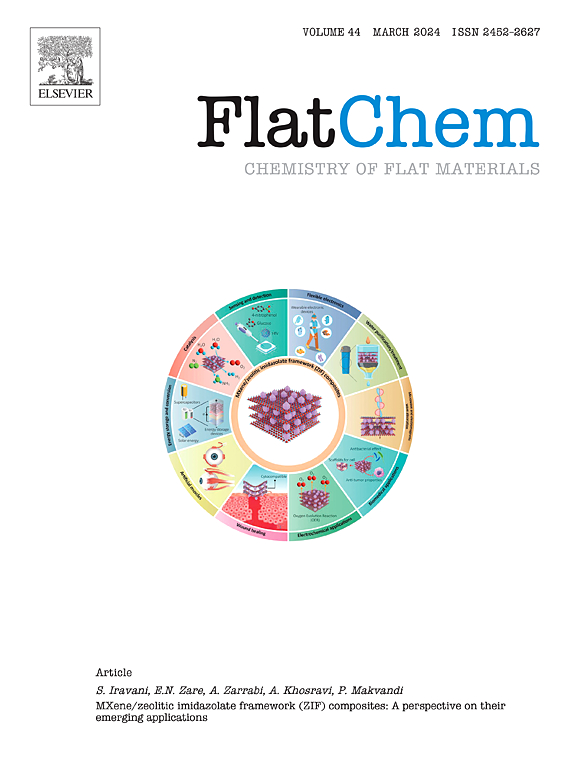Co-use of laser texturing and graphene synthesis
IF 6.2
3区 材料科学
Q2 CHEMISTRY, PHYSICAL
引用次数: 0
Abstract
The article is devoted to the study of wettability on combined textured surfaces (laser texturing): textured copper and graphene (Cu/G) synthesized on copper. For the first time the combined effect of various textures after laser texturing and graphene synthesis on corrosion current and wettability before and after corrosion is investigated. Previous research works have shown that the surface wettability after laser texturing varies greatly over time, from superhydrophilic to highly hydrophobic. However, the present work shows that the combined effect of laser texturing and graphene synthesis allows stabilizing the wettability of textured samples over time, as well as significantly reducing the impact of corrosion on the contact angle. The droplet contact angle changes slightly over time after corrosion. The smallest change in the contact angle corresponds to the Cu/G surface for textures with craters. At that, the corrosion current of the textured Cu/G sample is reduced 12–14 times, compared with the textured copper. The use of textures with craters provides higher corrosion resistance than in the case of textures without craters. The performed XPS analysis reveals that that the textured wall with craters has a maximum peak C = C (C1s XPS spectra). A new mechanism is proposed to explain the different wettability inversion period for textured copper with graphene synthesis. The wettability of textured surfaces is simulated using molecular dynamics methods. The contact angle of the nanodrop depends on both the textures and the hydrophilicity of the polished surface. The obtained results will be useful for the development of combined methods and composite materials in materials science to control wettability, stabilize surface properties, as well as to counteract aggressive environmental effects.

激光制绒和石墨烯合成的联合使用
文章专门研究了组合纹理表面(激光纹理)的润湿性:纹理铜和在铜上合成的石墨烯(Cu/G)。文章首次研究了激光纹理和石墨烯合成后的各种纹理对腐蚀前后的腐蚀电流和润湿性的综合影响。以往的研究表明,激光纹理后的表面润湿性随时间变化很大,从超亲水到高度疏水。然而,本研究表明,激光制绒和石墨烯合成的共同作用可以使制绒样品的润湿性随着时间的推移而趋于稳定,并显著降低腐蚀对接触角的影响。腐蚀后,液滴接触角会随时间发生轻微变化。对于带有凹坑的纹理,接触角变化最小的是 Cu/G 表面。此时,与纹理铜相比,纹理 Cu/G 样品的腐蚀电流降低了 12-14 倍。与无凹坑的纹理相比,使用带凹坑的纹理具有更高的耐腐蚀性。所进行的 XPS 分析表明,带有凹坑的纹理壁具有最大峰值 C = C(C1s XPS 光谱)。我们提出了一种新的机制来解释石墨烯合成纹理铜的不同润湿性反转周期。使用分子动力学方法模拟了纹理表面的润湿性。纳米滴的接触角取决于抛光表面的纹理和亲水性。所获得的结果将有助于在材料科学领域开发组合方法和复合材料,以控制润湿性、稳定表面特性以及抵御侵蚀性环境影响。
本文章由计算机程序翻译,如有差异,请以英文原文为准。
求助全文
约1分钟内获得全文
求助全文
来源期刊

FlatChem
Multiple-
CiteScore
8.40
自引率
6.50%
发文量
104
审稿时长
26 days
期刊介绍:
FlatChem - Chemistry of Flat Materials, a new voice in the community, publishes original and significant, cutting-edge research related to the chemistry of graphene and related 2D & layered materials. The overall aim of the journal is to combine the chemistry and applications of these materials, where the submission of communications, full papers, and concepts should contain chemistry in a materials context, which can be both experimental and/or theoretical. In addition to original research articles, FlatChem also offers reviews, minireviews, highlights and perspectives on the future of this research area with the scientific leaders in fields related to Flat Materials. Topics of interest include, but are not limited to, the following: -Design, synthesis, applications and investigation of graphene, graphene related materials and other 2D & layered materials (for example Silicene, Germanene, Phosphorene, MXenes, Boron nitride, Transition metal dichalcogenides) -Characterization of these materials using all forms of spectroscopy and microscopy techniques -Chemical modification or functionalization and dispersion of these materials, as well as interactions with other materials -Exploring the surface chemistry of these materials for applications in: Sensors or detectors in electrochemical/Lab on a Chip devices, Composite materials, Membranes, Environment technology, Catalysis for energy storage and conversion (for example fuel cells, supercapacitors, batteries, hydrogen storage), Biomedical technology (drug delivery, biosensing, bioimaging)
 求助内容:
求助内容: 应助结果提醒方式:
应助结果提醒方式:


